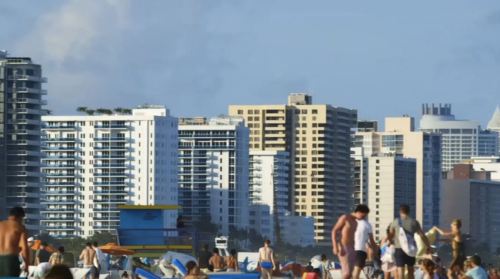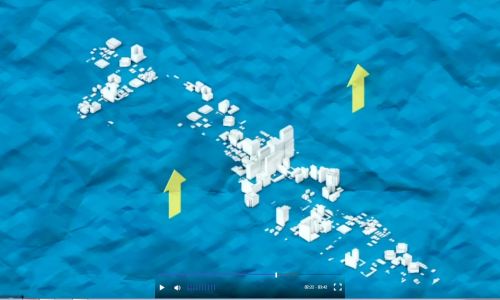The ethical principles below were used by the Isle de Jean Charles band of Biloxi-Chitimacha-Choctaw Tribe – Lowlander Center for its re-settlement proposal. Here is the vision statement by the Tribe: http://www.coastalresettlement.org/the-vision.html
Download PDF of Principles. Click Here.
Resettlement Principles
Anthony Oliver-Smith
Prologue:
Given that the current and potential impacts of climate changes are generating environmental and social processes that will displace large numbers of people, forcing them to migrate as individuals and families or permanently displacing them and/or relocating them as communities (IPCC 2014).
And given that displacement and resettlement are extraordinarily complex processes that to date have not been carried out well, and have in fact, resulted in the increased economic and social impoverishment of affected communities (Cernea 1997; Scudder 2009). Resettlement brings together a wide range of cultural, social, environmental, economic, institutional and political factors that both transpire in proximate time frames and intertwine, influencing each other and compounding the complexity. Therefore, understanding the complex nature of the emerging system of a resettlement project requires a more comprehensive and open-ended approach rather than a purely economic and operational perspective that has informed the majority of resettlement projects (de Wet 2005).
And given that the recent UNFCCC Conference of the Parties in Paris in November 2015 brought to the fore the imperative to link science and policy to morality. This global public recognition of morality as a third component of the strategy we must engage to deal with climate change is critically important (Lazrus and Marino 2016). These three components are equally essential for developing appropriate practices, particularly for people who are confronting the challenges of displacement and resettlement by climate change effects of climate change associated disasters. There is a moral-ethical obligation to assist displaced people and to improve our resettlement policies and practices for that purpose. Most importantly, our discussions about resettlement must be informed by a moral code that is fully embedded in the culture of affected people.
And given that the displaced have suffered some form of violation of their basic human and environmental rights. They have been uprooted against their will and their communities have been destroyed or made uninhabitable by social and/or ecological forces. United Nations covenants and conventions establish the human rights to health, a decent existence, work and occupational safety, an adequate standard of living, freedom from hunger, an adequate and wholesome diet, decent housing, education, culture, equality and non-discrimination, dignity, and harmonious development of the personality, the right to security of person and of the family, the right to peace and the right to development. (United Nations Universal Declaration of Human Rights 1948).
We propose the following assertions and principles to provide a basis for the development of policies that will guide and produce effective, developmental and humane resettlement projects for people affected by climate change effects and associated natural hazard triggered disasters.
- The resettlement effect is defined as the “loss of physical and non-physical assets, including homes, communities, productive land, income-earning assets and sources, subsistence, resources, cultural sites, social structures, networks and ties, cultural identity and mutual health mechanisms (Downing and Garcia-Downing 2009).
- The negative consequences of involuntary displacements extend far beyond the loss of land. Understanding what happens when people are involuntarily displaced begins with culture as a set of constructs and rules for constructing the world, interpreting it, and adapting to it (Downing and Garcia-Downing 2009).
- Removing people from their known environments separates them from the material and cultural resource base upon which they have depended for life as individuals and as communities. A sense of place plays an important role in individual and collective identity formation, in the way time and history are encoded and contextualized, and in interpersonal, community and intercultural relations (Oliver-Smith 2005). Removal from one’s place, one of the most basic physical dimensions of life, can be a form of removal from life, from that complex in which space, kin relations, local communities, cosmology and tradition are encoded and linked. Involuntary resettlement may break a community’s social geometry; that is, the bonds that in ordinary culture are continually recreated by socially constructed time, space and personages (Downing and Downing 2009), thus drastically destabilizing affected communities by threatening or rendering culture meaningless. Social life may become chaotic, uncertain, and unpredictable.
- The separation or fragmentation of community that frequently accompanies uprooting may cause stress and suffering (Scudder 2009). Lives are disrupted, social relationships may be broken, social and economic assets lost, leaders diminished, people falling ill and dying prematurely, and the capacity of a community’s resilience to withstand the normal range of environmental and social forces of their society diminished.
- The design, materials and construction of resettlement projects are often more expressive of goals of economic efficiency and elite perceptions of the poor and minorities than the needs of the displaced. In the long run such misguided projects actually cost more because the settlements and houses are abandoned or destroyed and the social disarticulation they foster undermines the productivity and self-sufficiency of the group. The built environment in which we live is both expressive of and shapes our social relations. Material reconstruction can both support and express social reconstitution. Material reconstruction can be a confirmation of social reconstitution. It can also undermine the process severely and very frequently has (Oliver-Smith 1991; 2005).
- Productive activities are disrupted. Resources, such as land or jobs, are either irrelevant or gone. A significant cost of resettlement may be the loss of livelihood possibilities or employment in the resettlement process or if such opportunities are not available at the new site. Involuntary resettlement frequently diminishes the economic organizational capacity of a group. The loss of livelihood is frequently responsible for the abandonment of resettlement communities (Cernea 1997).
- Cultural transmission and socialization activities become difficult to sustain given that what is being taught and learned is disarticulated from the present situation. Social arrangements that allow sharing of common goods become insignificant because the common resource is disappearing or gone. Involuntary displacement directly threatens a people’s agreements on the social geometry – their temporal, spatial and social arrangements (Downing and Garcia-Downing 2009).
- Negative impacts on the health condition of resettled population are a consistent outcome of resettlement projects, especially vulnerable groups including children, women and the elderly (Kedia 2009). The elderly in particular are vulnerable in resettlement and frequently suffer high rates of mortality in the aftermath of resettlement, a phenomenon that is often referred to as “dying of a broken heart.”
- Resettled populations frequently suffer a loss in social and political power. Removed from their local context, they are at a disadvantage in seeking resources in a new or different system of political organization and power relationships. Moreover, if relocated into existing communities, they are at a further disadvantage in their relations with host populations who may resent their arrival as well as the competition for resources (Cernea 1997; Scudder 2005).
- Authentic participation is consistent with the emphasis on the recognition and restoration of the rights of affected people. Resettlement projects that impose heavy costs are often characterized by policies that depend very little on consultation with the affected population. The previously mentioned problems derive from a lack of consultation with, and participation by the affected people. This lack is generally due to a disparagement of local knowledge and culture on the part of policy makers and planners. Affected people are generally not considered by elites to have the social and cultural tools necessary for executive or even advisory forms of decision making, planning, and execution that pertain to resettlement projects (Oliver-Smith 1991).
Conclusion
The task that uprooted peoples and those who would support and assist them face is to reconstruct self, family and community, both in the form of material structures and processes and in their social and cultural expressions. The most pressing need at this juncture is achieve a greater balance between addressing the material needs of displaced communities and acting in a way that supports, rather than undermines their struggle to reconstitute the social bases of their communities. The wreckage from uprooted communities around the world is as much due to poor policy as it is to the many forms of uprooting and violence to which they have been subjected (Oliver-Smith 2005).
Resettlement projects must be developed that enable people to materially sustain themselves while they begin the process of social reconstruction. Resettlement projects must be designed to further, rather than impede, the process of community reconstitution. However, if the level of impoverishment experienced by most resettled peoples is any indicator, even adequate systems of material reproduction are beyond either the will or the capabilities of most contemporary policy makers and planners.
References
Cernea, M. 1997. The risks and reconstruction model for resettling displaced populations, World Development 25(10): 1569–88.
De Wet, C. 2006. “Risk, complexity and local initiative in involuntary resettlement outcomes.” In Towards improving outcomes in development induced involuntary resettlement projects, edited by Chris de Wet. Oxford and New York: Berghahn Books.
Downing, T and C. Garcia-Downing 2009 “Routine and Dissonant Cultures: A Theory about the Psycho-socio-cultural Disruptions of Involuntary Resettlement and Ways to Mitigate Them without Inflicting Even More Damage, In Development and Dispossession: The Crisis of Forced Displacement and Resettlement edited by Anthony Oliver-Smith, Santa Fe: SAR Press. Pp.225-254
Intergovernmental Panel on Climate Change (IPCC). 2014 Climate Change: Synthesis Report. http://www.ipcc.ch/report/ar5/syr/ Kedia, Satish 2009 Health Consequences of Dam Construction and Involuntary Resettlement. In Development and Dispossession: The Crisis of Development Forced Displacement and Resettlement, edited by Anthony Oliver-Smith, Santa Fe: SAR Press. Pp.97-118.
Lazrus, Heather and Elizabeth Marino 2016 Culture, Climate Change and Cement, unpublished paper delivered at the annual meetings of the Society for Applied Anthropology, March 30, 2016,Vancouver, BC, Canada
Oliver-Smith, Anthony 1991 “Success and Failures in Post‑Disaster Resettlement”, Disasters 15:1:12‑24
Oliver-Smith, Anthony 2005 “Communities after Catastrophe: Reconstructing the Material, Reconstituting the Social,” in Stanley Hyland (ed) Community Building in the 21st Century, Santa Fe: School of American Research Press.
Scudder, Thayer. 2009. “Resettlement Theory and the Kariba Case: An Anthropology of Resettlement,” In Development and Dispossession: The Crisis of Development Forced Displacement and Resettlement, edited by Anthony Oliver-Smith, Santa Fe: SAR Press. Pp.25-48.
United Nations 1948 The Universal Declaration of Human Rights. http://www.un.org/en/universal-declaration-human-rights/
Anthony Oliver-Smith
Anthony Oliver-Smith is Professor Emeritus of Anthropology at the University of Florida. He is also affiliated with the Center for Latin American Studies and the School of Natural Resources and Environment at that institution. He has held the Greenleaf Chair of Latin American Studies at the Stone Center for Latin American Studies at Tulane University(2008) and the Munich Re Foundation Chair on Social Vulnerability at the United Nations University Institute on Environment and Human Security in Bonn, Germany(2007). He has been awarded the Bronislaw Malinowski Award of the Society for Applied Anthropology for 2013 for his lifetime achievement and work in disaster studies and resettlement research. He has done anthropological research and consultation on issues relating to disasters and involuntary resettlement in Peru, Honduras, India, Brazil, Jamaica, Mexico, Japan, and the United States. He has served on the executive boards of the National Association of Practicing Anthropologists and the Society for Applied Anthropology and on the Social Sciences Committee of the Earthquake Engineering Research Institute. He is also a member of La Red de Estudios Sociales en Prevención de Desastres en America Latina and is on the editorial boards of Environmental Disasters, the International Journal of Disaster Risk Reduction and Desastres y Sociedad. He is currently a member of the scientific committee on Integrated Research on Disaster Risk of the International Council for Science and the Climate Change Task Force of the American Anthropological Association.








